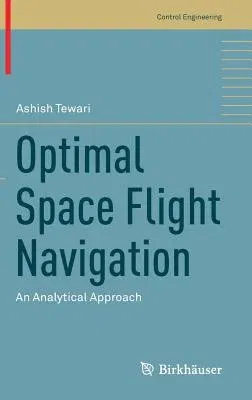Ashish Tewari
(Author)Optimal Space Flight Navigation: An Analytical Approach (2019)Hardcover - 2019, 14 January 2019

Qty
1
Turbo
Ships in 2 - 3 days
In Stock
Free Delivery
Cash on Delivery
15 Days
Free Returns
Secure Checkout

Part of Series
Control Engineering
Print Length
270 pages
Language
English
Publisher
Birkhauser
Date Published
14 Jan 2019
ISBN-10
3030037886
ISBN-13
9783030037888
Description
Product Details
Author:
Book Edition:
2019
Book Format:
Hardcover
Country of Origin:
NL
Date Published:
14 January 2019
Dimensions:
23.39 x
15.6 x
1.75 cm
ISBN-10:
3030037886
ISBN-13:
9783030037888
Language:
English
Location:
Cham
Pages:
270
Publisher:
Series:
Weight:
576.06 gm